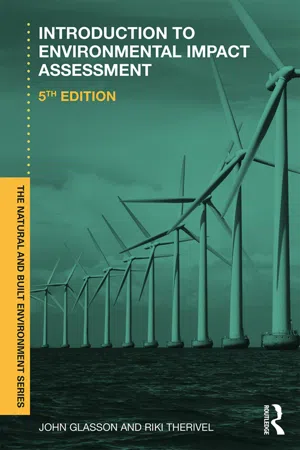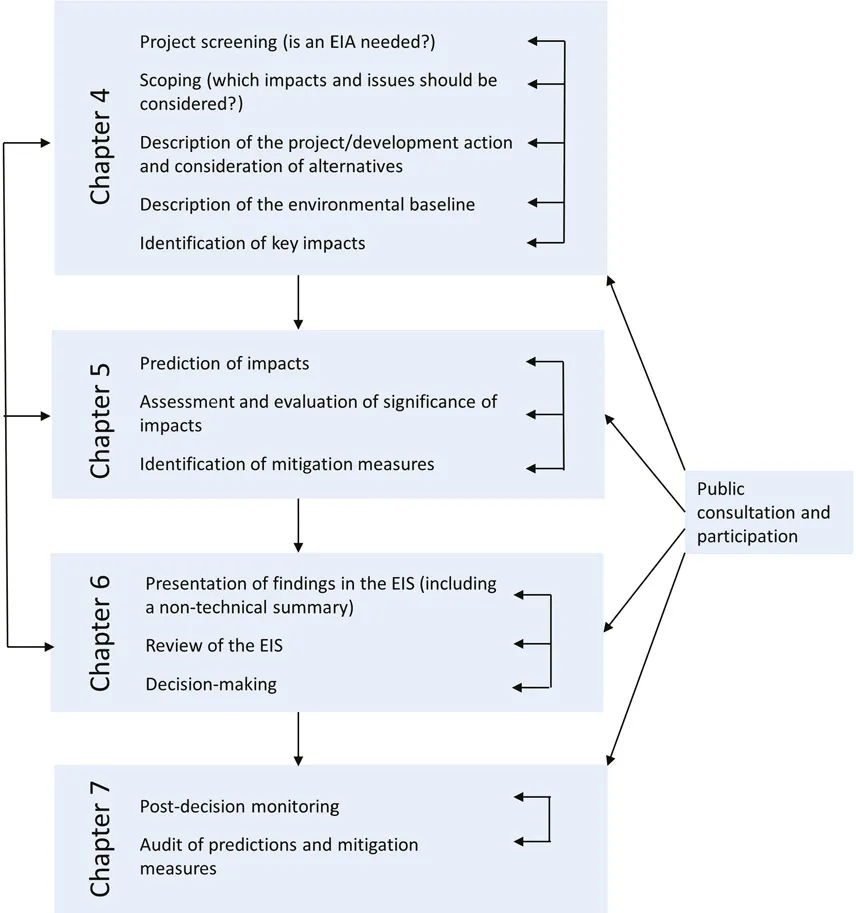
- 382 pages
- English
- ePUB (mobile friendly)
- Available on iOS & Android
Introduction To Environmental Impact Assessment
About this book
A comprehensive, clearly structured and readable overview of the subject, Introduction to Environmental Impact Assessment has established itself as the leading introduction to EIA worldwide. This fifth edition is a major update reflecting many significant changes in EIA procedures, process, practice and prospects over the last decade. In particular, it includes:
- a much more international dimension, drawing on EIA activities worldwide;
- an up-to-date coverage of the revised EU EIA Directive and its implementation;
- the associated update of contemporary UK procedures and practice;
- best practice on evolving methods in the EIA process;
- a rich array of UK and many international case studies;
- a new coverage of emerging EIA impact topics, including equality/deprivation; culture; resettlement; climate change; ecosystem services; and risk, resilience and cumulative impacts;
- an appraisal of some next steps in the EIA process, including a more effective and proportionate EIA; the impact of technological change; the changing interpretation of the project; project implementation, monitoring and adaptive management; and moves towards a more integrated impact assessment. Together, these topics act as a kind of action list for future EIA;
- the development of SEA legislation and practice in the UK, EU and worldwide; and
- a set of appendices containing key legislation and an EIS review framework.
It is also makes full use of colour illustrations and chapter questions for discussion. Written by two authors with extensive research, training and consultancy experience of EIA, this book brings together the most up-to-date information from many sources.
Introduction to Environmental Impact Assessment 5th Edition provides a complete, and critical, introductory text that also supports further studies. Students in undergraduate and postgraduate planning programmes will find it essential as a course text, as will students of environmental management/policy, environmental sciences/studies, geography and built environment. Key stakeholders involved in assessment activities – planners, developers, community groups, pressure groups and decision-makers in government and business – will also welcome this latest edition as a very effective means of getting to grips with the many facets of this important and evolving subject that affects a widening range of development projects.
Frequently asked questions
- Essential is ideal for learners and professionals who enjoy exploring a wide range of subjects. Access the Essential Library with 800,000+ trusted titles and best-sellers across business, personal growth, and the humanities. Includes unlimited reading time and Standard Read Aloud voice.
- Complete: Perfect for advanced learners and researchers needing full, unrestricted access. Unlock 1.4M+ books across hundreds of subjects, including academic and specialized titles. The Complete Plan also includes advanced features like Premium Read Aloud and Research Assistant.
Please note we cannot support devices running on iOS 13 and Android 7 or earlier. Learn more about using the app.
Information


| Non-technical summary |
| Part 1: Introduction, methods and key issues •Introduction •Methodology •Summary of key issues |
| Part 2: Background to the proposed development •Preliminary studies: need, planning, alternatives and site selection •Site description, baseline conditions •Description of proposed development •Development programme, including site preparation, construction, operation, decommissioning and restoration (as appropriate) |
| Part 3: Environmental impact assessment – topic areas •Land use •Geology, topogr... |
Table of contents
- Cover
- Half Title
- Series Information
- Title Page
- Copyright Page
- Dedication
- Contents
- Preface to the first edition
- Preface to the fifth edition
- Acknowledgements
- Part 1 Principles and procedures
- Part 2 Process
- Part 3 Practice
- Index